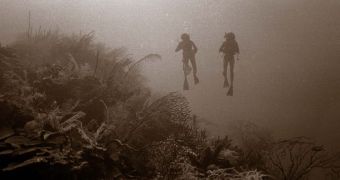A team of experts led by University of Charleston in South Carolina (UCSC) ocean ecologist and biology professor Phil Dustan announces the development of a new method for observing changes affecting coral reefs around the world. The technique requires the use of satellites.
Dustan was one of the first experts in the world to be exposed to the idea that human activities may in fact influence the health of corals, back in 1974. During the ensuing three decades, the researcher monitored coral reefs around the world, analyzing the patterns in which they bleach and are destroyed.
After building a handheld spectrometer for studying the light released by coral reefs as a whole ecosystem, Dustan realized the importance of being able to keep an eye on reef health around the world. In the new study, he used data from the NASA Landsat satellites for this very purpose.
This constellation is capable of monitoring multiple aspects of Earth's atmosphere, oceans and landmasses at the same time, and has been providing uninterrupted observations capabilities for more than 40 years.
What the UCSC investigator figured out was how to use passive Landsat observations to monitor the total amount of light reflected from not just the corals themselves, but every species making up the complex ecosystem that is a large reef.
Due to the fact that Landsat data cover the entire globe, finding a way of using them turned out to be an excellent method for keeping track of how pollution, human activity, ocean acidification, algae invasions and other similar events were affecting the overall health of reefs.
Information collected by the NASA satellite constellation were used to piece together temporal textures, constructs showing where changes in overall reef reflectance information occurred over time.
What this approach to studying reefs does is it enables scientists to identify hotspots where conservation efforts can intervene to boost reefs' chances of survival. At this point, most coral populations are in decline, primarily due to pollution.
Bleaching is the most common problem, and occurs as the microorganisms inhabiting the corals separate from their support structures under the action of oceanic acidification, and then float away. Increased average temperatures can also cause the same effect.
This leaves the corals without the ability to carry out photosynthesis, which eventually leads to their death, as well as the demise of the entire ecosystem.

 14 DAY TRIAL //
14 DAY TRIAL //